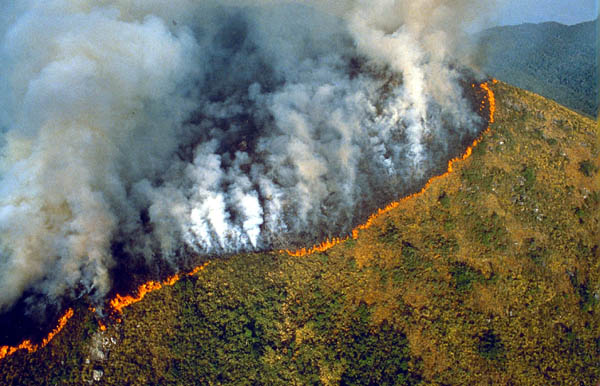Brazil once had the highest deforestation rate in the world.
In 2005 it had the largest area of forest removed annually. Since 1970, over
600,000 square kilometers of the Amazon Rainforest have been destroyed. In
2012, the Amazon was approximately 5.4 million square kilometers, which is 87%
of the Amazons original state. Deforestation has caused rain forests to decrease
in size. Despite the reduction in the rate of deforestation in the last ten
years, with the current rate the Amazon Rainforest will be reduced by 40% by
2030. With the reduced forests, people
are less able to benefit from the natural resources the ecosystems provide.
This may lead into increased poverty and in some cases people may need to move
in order to find forests that can sustain them. Deforestation also leads to
loss of biodiversity. Species lose their habitat or can no longer subsist in
the small fragments of forests that are left. Population’s decrease and
eventually some may become extinct. The only positive social impact may be that
it causes jobs and employment in the community since many workers are needed.
Without trees humans and animals will not be able to breath in oxygen and
exhale carbon dioxide. Deforestation also causes a loss of water cycling.
Deforestation reduces water cycling services provided by trees. In Brazil, some
of the water vapour that emanates from forests is transported by wind to its
Central-South region, where most of the country’s agriculture is located.
Brazils annual harvest has a gross value of about $65 billion US. When rainfall
reduction is added to the natural variability that characterizes rainfall in
the region, results may include droughts that can lead to major environmental
impacts. The forests ability to absorb pollutant carbon dioxide is reduced, but
at the same time there is an increased presence of it released from burning
trees. Climate change is another impact of deforestation because by destroying
the trees, there will be an excess of carbon dioxide in the atmosphere and the
carbon dioxide will alter the climate of the region. Deforestation may also
cause soil erosion destructions because without trees, the soil will be exposed
to the suns heat. The soils moisture will dry up, nutrients evaporate, and
bacteria that help break down products are affected. Eventually rain-washes
down the soils surface and erosions take place. Economic impacts include an
increase in revenue because there will me more furniture and paper products
created from the trees, so it is a booming industry, although it can be a very
costly project to cut down so many trees.
In my opinion, I would say deforestation is a greater threat
in Brazil than Canada because of its large rate of forests removed annually
which lead to many impacts. For instance the environmental impact of soil erosions
from deforestation is more likely to happen in Brazil because of the heat
causing the soils moisture to dry up, where as in Canada there aren’t many soil
erosions that occur. Canada has 0.02% of forested area and deforestation n
Canada is among the worlds lowest since Canada is a world leader in sustainable
forest management. Prevention is key and Canada has been setting a good example
for other countries and states. Today Canada’s 348 million hectares of forest
lands represent about 9% of the worlds forest cover, but accounts for only 0.3%
of global deforestation. Overall Canada is less of a threat due to leading a
sustainable forest management project whereas Brazils forests are continuing to
reduce at a high rate.


No comments:
Post a Comment